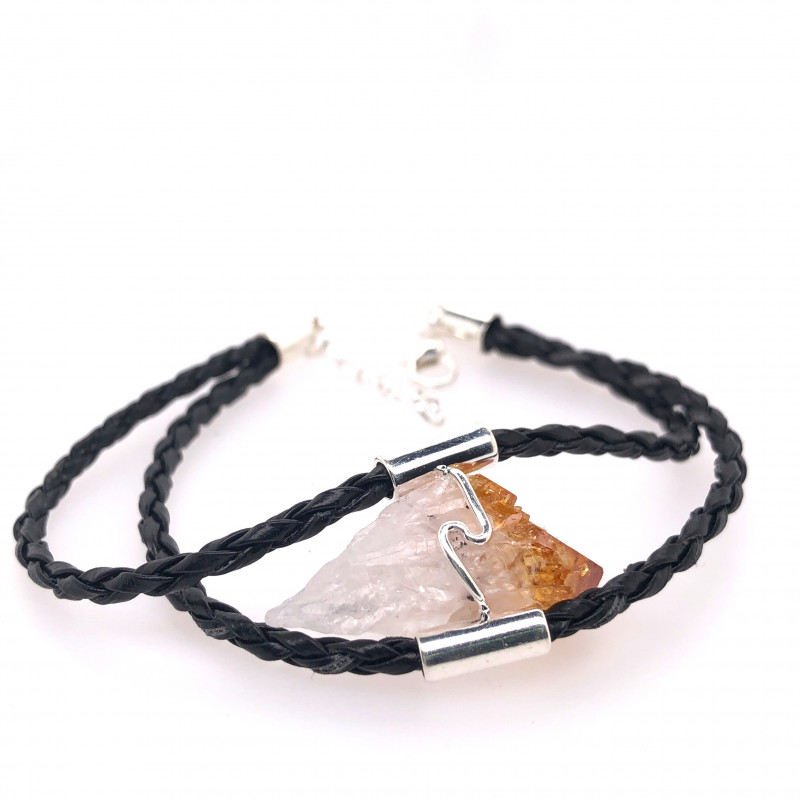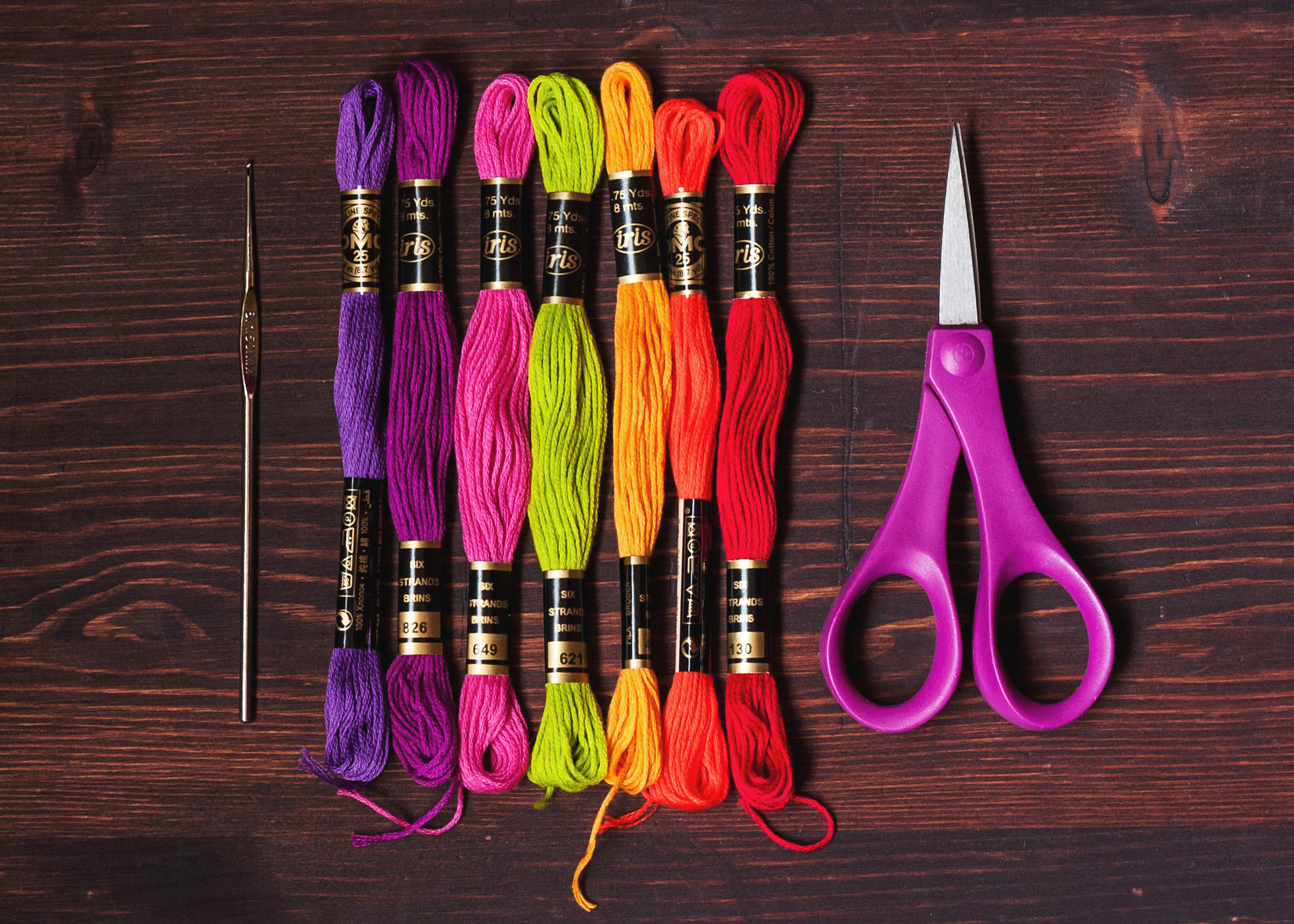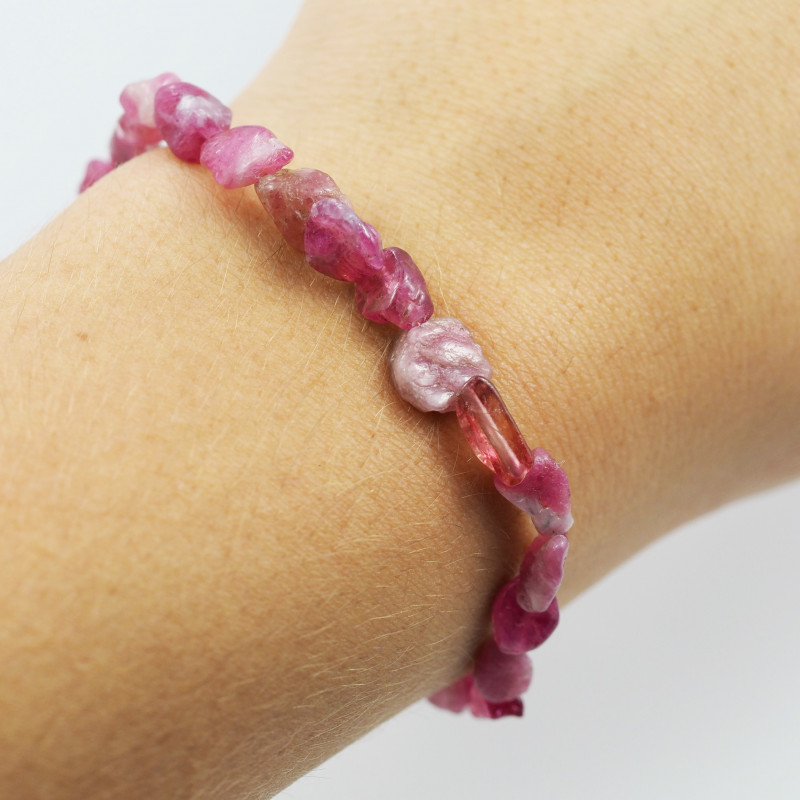
Friendship Bracelets: How They Started & How to Make Them

Friendship bracelets are commonly hand-made, knotted bracelets given to someone as a gesture of love. Making and wearing friendship bracelets is a sweet, time-honored tradition to celebrate your bond to the person who knows you best: your best friend!
You might associate friendship bracelets with little girls at summer camp, but friendship bracelets have a long history and cultural significance. Plus, friendship bracelets are for adults, too!
Today, we’ll examine the origins of friendship bracelets, highlight some popular types, and teach you how to make your own with easy friendship bracelet patterns.

History of Friendship Bracelets
What culture are friendship bracelets from? The origins of knotted friendship bracelets can be traced to a few cultures.
The earliest decorative knots — seen in clothing and homeware — date back to China circa 481 to 211 BC. Friendship bracelets specifically originated in the indigenous communities of Central and South America.
However, the decorative knot-tying known as macramé — used in most friendship bracelets now — started with 13th-century AD Arabic textiles.
The Moors brought this Arabic technique to Spain in the 1400s. It soon spread to England, Italy, and France. In fact, the French term macramé came in 1865, but likely derived from the Arabic miqrama, meaning “ornamental fringe.”
A similar term is the Japense misanga, now an international term for an embroidered friendship or “wish” bracelet, said to grant your wish when the string eventually falls off.
Modern Resurgence
Macramé was a popular hobby during the Victorian Era, but the popularity of friendship bracelets in the US came later.
Like mood rings, friendship bracelets became popular among youths in America during the 1970s when “ethnic” fashion was in-style.
During the 1980s, however, friendship bracelets were a symbol of protest, particularly worn by religious groups during political rallies and by Mayans in Guatemala protesting government repression.
Native Americans had their own friendship bracelet traditions, developing patterns like the chevron. They’re sometimes credited with originating the tradition of making someone a friendship bracelet out of love. Many Native Americans today wear friendship bracelets as symbols of resistance, like during the 2016 Dakota Access Pipeline protests.
What do friendships symbolize today? Beyond friendship and commitment, friendship bracelets can also honor one’s heritage and represent standing up for what you believe in.
With that in mind, we’ll discuss the different types of friendship bracelets.
 Image credit: Dyroc, Flickr | Creative Commons Attribution 2.0 Generic license
Image credit: Dyroc, Flickr | Creative Commons Attribution 2.0 Generic license
Types of Friendship Bracelets
Pretty much any bracelet can be a friendship bracelet — the symbolism is in the gesture! That means you can wear gemstone-adorned, beaded, wire-wrapped, gold, or silver friendship bracelets, among others. Gem lovers may love a metal friendship bracelet decorated with their friend’s birthstone.
That said, friendship bracelets are traditionally made with fibers like:
Yarn
Thread
Embroidery floss
String
Twine
The friendship bracelet string typically recommended is embroidery floss (strands of 6 strings of embroidery thread spun together).
What you do with your material is up to you. There are friendship bracelet patterns using macramé, crochet, knitting, braiding, and even weaving.
If those terms are unfamiliar, here are some quick definitions:
Macramé: Tying knots from set of strands to form patterns (by hand)
Crochet: Interlocking loops using one hooked needle
Knit: Interlocking loops using two needles
Braid: Interlacing three strands by passing the right and left strands over the center strand
Weave: Interlacing horizontal strands through vertical strands
Most friendship bracelet patterns use macramé knots.
Before you decide on your technique and pattern, you’ll need to choose the right color(s) to use, which can carry its own special meaning.
Friendship Bracelet Color Meanings
What color represents best friends? In literature, the colors that typically symbolize friendship are yellow first and foremost, along with pink, turquoise, and beige.
Color associations vary by culture, but generally, here’s what each color can represent in a friendship bracelet:
Red: Excitement, energy
Orange: Optimism, creativity
Yellow: Happiness, hope
Green: Luck, peace
Blue: Tranquility, freedom
Turquoise: Protection, inspiration
Purple: Wisdom, open-mindedness
Pink: Love, nurturing
Brown: Comfort, warmth
Black: Energy, strength
White: Goodness, safety
Gray: Balance, harmony
Now it’s time to start making your friendship bracelet!
 Image credit: LornaWatt, Flickr | Creative Commons Attribution 2.0 Generic license
Image credit: LornaWatt, Flickr | Creative Commons Attribution 2.0 Generic license
How to Make A Friendship Bracelet
Next, we’ll go through each step of making a friendship bracelet, starting with the preparation.
Preparing Your Materials
The first step to making a friendship bracelet is getting your materials, and you’ll only need a few:
Embroidery floss or your fiber of choice
Scissors
Pin or tape
Surface to attach the floss to as you work (e.g. clipboard, wall hook, desk)
Optional add-ons are:
Beads (decorative or letter beads)
Shells
Clamps, rings (like a key ring), or ribbon crimps for the ends of the bracelet
How long do you cut the strings for friendship bracelets?
It depends on how many strands you’re using and the pattern’s intricacy, but the rule-of-thumb is the length of your shoulder to fingertips. This is usually 25 to 30 inches.
Another way to calculate the length is measuring your wrist’s circumference using a flexible measuring tape or marking it on a piece of string, then measuring the string with a ruler. Take that length and multiply it by 5.
If your wrist circumference is 7 inches, that means you’d need 30-inch strings.
Add 6 inches for bracelets with more than six strands or lots of knots in every row.
It’s always better to have too much string at the end than to realize you’re out of string before you can finish your bracelet!
Choosing Your Pattern
What is the most popular friendship bracelet? Unsurprisingly, given their origins, the most popular friendship bracelets come from Native American patterns; chevron, totem pole, diamond, and broken ladder are among the most popular patterns, with chevron coming in the lead.
Some patterns are easier than others, and most of the patterns above require some basic knotting practice. So, what is the easiest friendship bracelet to make?
The easiest and quickest friendship bracelet to make is a three-strand braid.
 Pictured above: 3-strand braid diagram | Image credit: Benutzer:Stilfehler, Creative Commons Attribution-Share Alike 3.0 Unported, 2.5 Generic, 2.0 Generic and 1.0 Generic license
Pictured above: 3-strand braid diagram | Image credit: Benutzer:Stilfehler, Creative Commons Attribution-Share Alike 3.0 Unported, 2.5 Generic, 2.0 Generic and 1.0 Generic license
How to Make Easy 3-Strand Braided Friendship Bracelet
Here are the steps:
Cut 3 strands of string (or your preferred material).
Keeping the strings lined up, tie them together in a knot at one end, leaving a couple of inches above the knot. Secure this end to a surface with tape or a pin.
Spread out your strings and think of them as String A, B, and C from left to right.
Place String A over String B. Now String A has become your center string.
Place String C over String A (in the center). Now String C has become your center string.
Repeat Steps 4 and 5, placing each new left string over the center string, then the right string over the center, and so on until your bracelet is the desired length.
Tie a knot with all three strings at the end, then cut a few inches below that knot to be able to tie both ends together.
Braids are also a great way to create thinner ends to tie together on more complex patterns.
Want an easy friendship bracelet pattern with two strings?
How to Make Friendship Bracelets for Beginners with 2 Strings
You can use just two strings to make a friendship bracelet by making half-hitch knots. Here’s how:
Cut 2 strands of your desired material and attach them side-by-side to your work surface.
Lay the left string (String A) horizontally over the right one (String B).
Wrap String A underneath String B from the right side.
Pass the end of String A through the loop you created in Step 2.
Hold String B taut as you tighten the knot.
Repeat Steps 2 to 5 but switch the strings, using String B to make a knot around String A.
Keep making half-hitch knots, alternating sides between each knot.
Here’s a diagram for reference:
 Image credit: Wikkrockiana. Original by Tosk Albanian | GNU Free Documentation License
Image credit: Wikkrockiana. Original by Tosk Albanian | GNU Free Documentation License
Ideas to Up Your Friendship Bracelet Game
Once you’ve mastered the half-hitch knot, you can create all sorts of patterns. The chevron pattern, for instance, incorporates 6-8 strings with half-hitch knots from left to right, then right to left, and so on.
More knots to take your friendship bracelets up a notch are:
Lark’s head / Cow’s hitch knot (great for attaching strings to a ring or clasp)
Square knot
Half knot / Spiral knot
Gathering knot (great for the ends of the bracelet)
The best way to learn these knots is from a friend who knows macramé — bonding time! But if you’re both newbies, great resources are:
Video tutorials (e.g. Lots of Knots Canada on YouTube)
Friendship bracelet guidebooks (e.g. Friendship Bracelets 101 by Suzanne McNeill)
Online blogs (e.g. Macrame for Beginners)
Once you’re comfortable with knots, you can start customizing your friendship bracelet.

Customizing Your Friendship Bracelet
The traditional add-on to friendship bracelets is beads, which can vary from basic glass beads to special charms to letter beads.
Letter beads are great for adding a message to your bracelet.
Need some inspiration? Some cute words to put on friendship bracelets are:
Forever
Everlasting
Believe
Strong
Love
Onward
Your bracelet is done, now it’s time to wear it!

How to Wear A Friendship Bracelet
Are there rules for friendship bracelets? If so, what are the rules of friendship bracelets?
Traditionally, your friend ties on the bracelet they made for you as you make a wish and vice versa. Don’t remove it and your wish will be granted when the bracelet naturally falls off.
Is it better to wear a friendship bracelet on the left or right hand?
Spiritually, the left hand represents self-love and personal growth, while the right hand represents action and energy; therefore, wearing a friendship bracelet on the left will help you receive positive energy, and wearing it on the right will help you give positive energy.
Buddhists believe bracelets worn on the left are believed to be luckier.
Ergonomically, the most comfortable side is your non-dominant wrist, which also helps the bracelet last longer.
Not into wearing bracelets? You can also pin it to your bag or clothing, or wear it as an anklet.
Make or Buy Your Own Friendship Bracelet Today!
Friendship isn’t just sentimental — research shows good friendships keep us healthy, boost our confidence, and even increase our lifespan.
Friendship bracelets are perfect for celebrating this essential relationship. Get your materials and plan a day with your bestie to make friendship bracelets together — you’ll be able to bond and have a token of your love to carry with you after.
Rather shop for the perfect friendship bracelet? Browse our collection of beautiful bracelets!
Search the Fashion Encyclopedia
Related Auctions
Related Articles
How to Buy Jewelry on the Internet. There are so many types of beads. It will be up to you to determine where you want to start, all authentic gemstone beads or if you will also use glass beads ‘man made’ as well as gold and silver beading. You
10th Apr 2019
How to buy a ruby for your ring or pendant,Make sure that you learn as much as you can about Rubies, prior to buying a ring or a setting that you are going to add Rubies to. Like Diamonds, Rubies can be flawed, and imperfect The Ruby is one of the most b
10th Apr 2019
jewelry polish cloth,A magic cloth just doesn’t exist. That being said, there are cloths for silver, gold, platinum, bronze, copper, stainless steel and other metals. Each one should be impregnated with special treatments and chemicals targeted at
10th Apr 2019
Latest Articles
Titanium is a popular jewelry metal known for being lightweight, durable, and affordable. Learn all about titanium, how it compares to similar metals, and the pros and cons of titanium jewelry.
7th Feb 2023
Learn all about tungsten jewelry - from its history and uses to its durability and care. By the end of our guide, you’ll know if tungsten is right for you!
7th Feb 2023
Thinking about adding some timeless white gold jewelry to your fine accessories collection? Here’s all there is to know about sophisticated white gold!
29th Jan 2023





